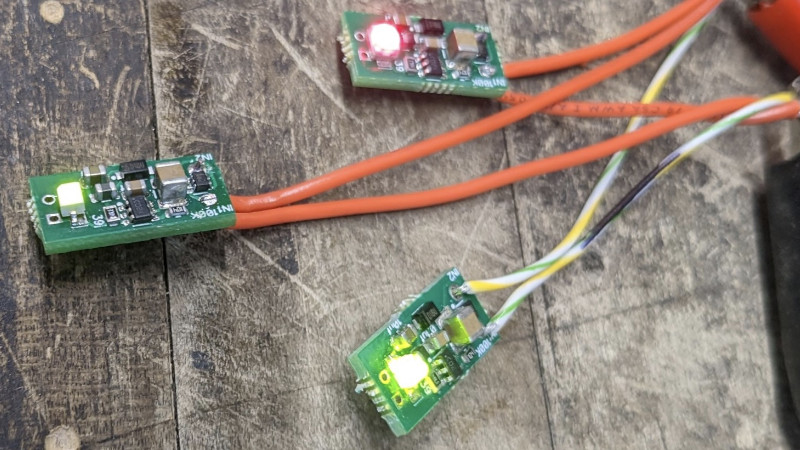Do-Everything LED Indicator Light Runs From 4V to 60V

If you’re working with 3.3V or 5V circuits, it’s easy for you to throw on a power or status LED here or there. [Tom Gralewicz] has found himself in a pickle, though, often working on projects with voltages like 36V or 48V. Suddenly, it’s no longer practical to throw an LED and a resistor on a line to verify if it’s powered or not. Craving this simplicity, [Tom] invented the Cheap Universal LED Driver, or CULD, to do the job instead.
The CULD is designed as a simple LED indicator that will light up anywhere from 5V to 50V. It’s intended to be set-and-forget, requiring no fussing with different resistor values and no worries for the end user that excessive current draw will result.
The key part ended up being the LV2862XLVDDCR – a cheap switching regulator. It can output 1 mA to 600 mA to drive one or several LEDs, and it can do so anywhere from a 4V to 60V input. Assemble this on a coin-sized PCB with some LEDs, and you’ve got your nifty do-everything indicator light. With a bridge rectifier onboard, it’ll even work on AC circuits, too.
[Tom] has built a handful himself, but he open-sourced the design in the hopes it will go further. By his calculations, it would be possible to build these in quantities of 1000 for a BOM cost of less than $0.50 each, not counting assembly or the PCB itself. We’d love to see them become a standard part of hacker toolkits, too. If you’ve got a pick-and-place plant that’s looking for work this week, maybe get them on to something like this and see what you can do! If it turns out to be a goer, maybe drop us a note on the tipsline, yeah?
from Blog – Hackaday https://ift.tt/EXIMjay
Comments
Post a Comment